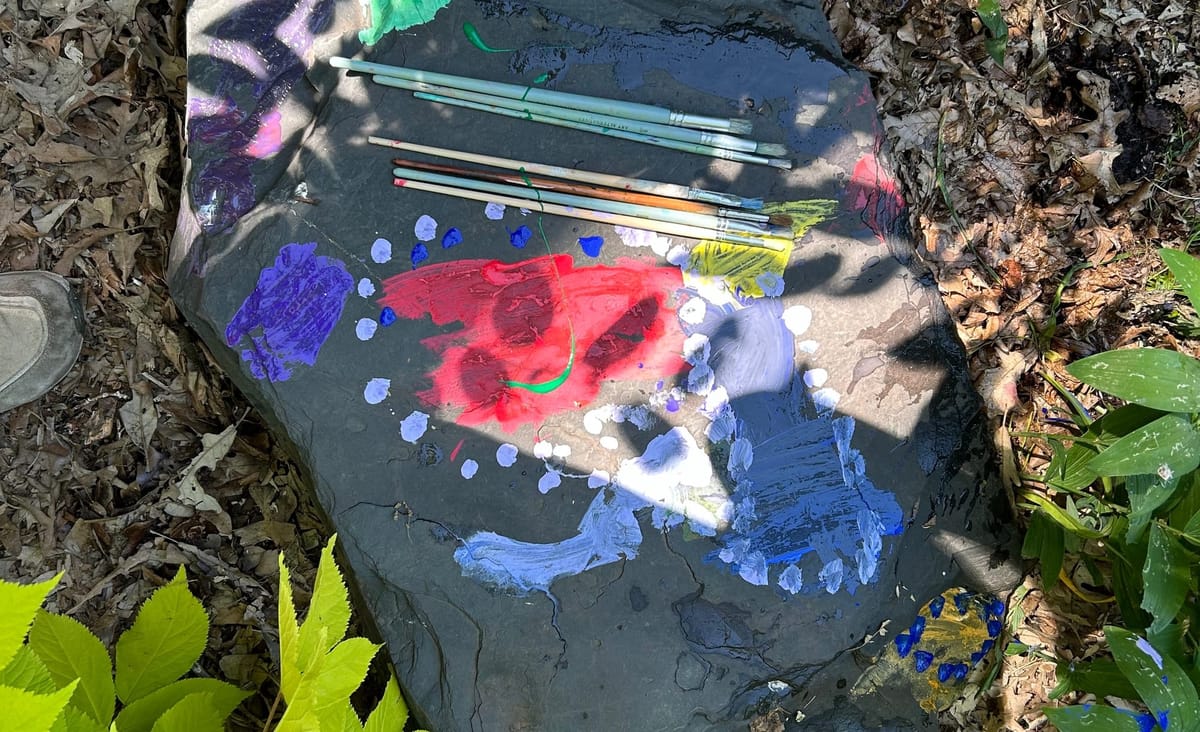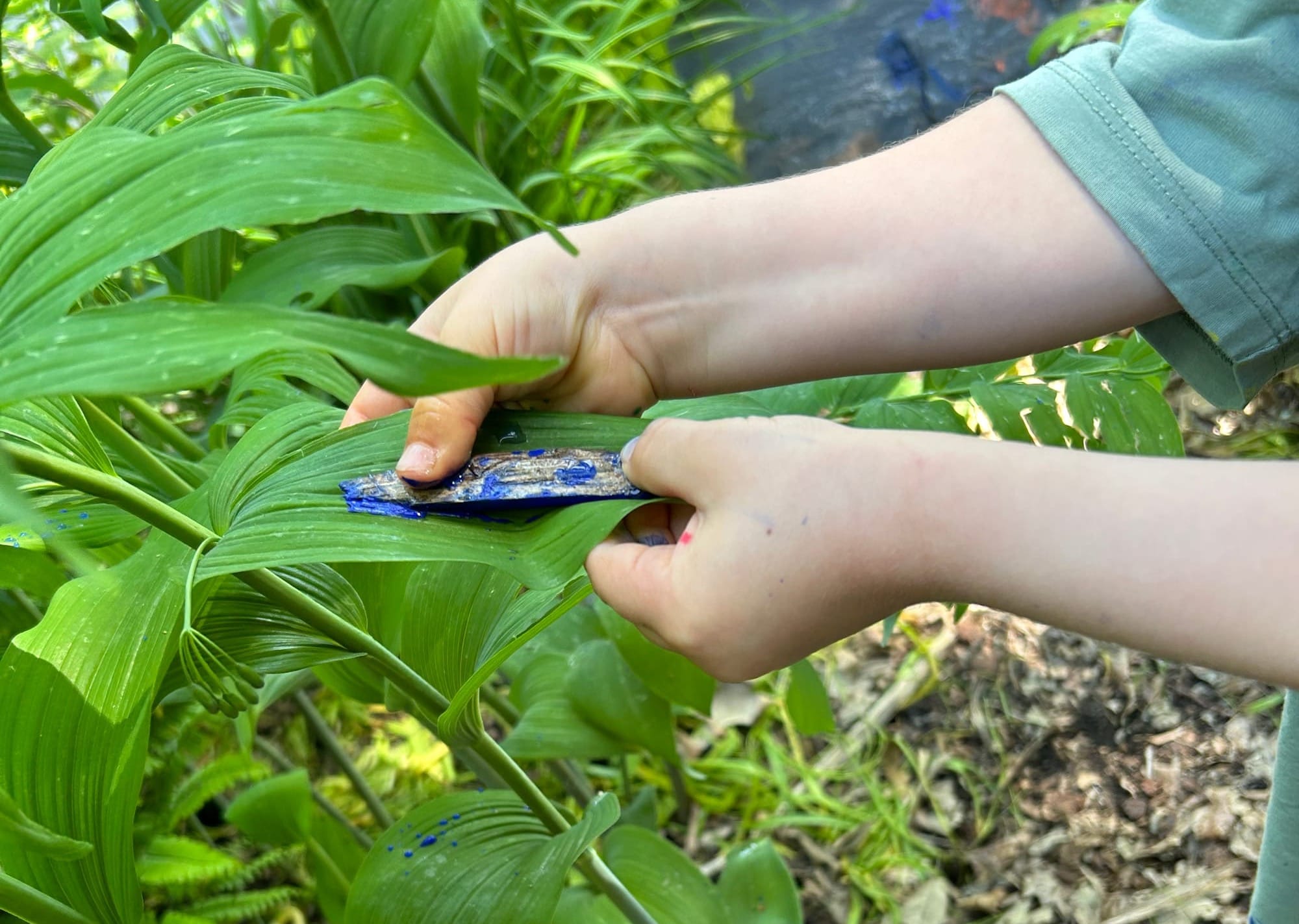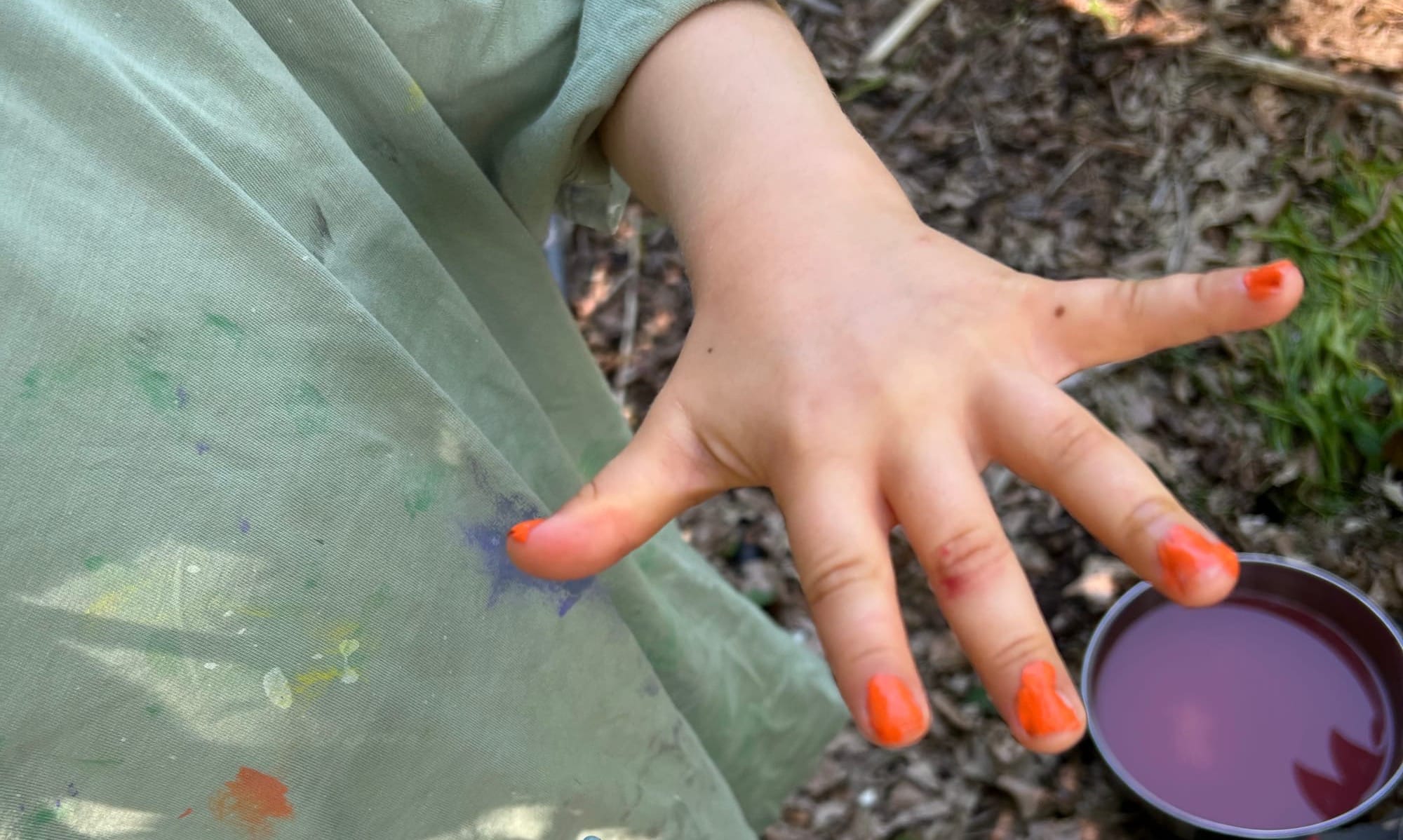Outdoor art

Regular readers get it by now that I like heading outside with the grandchildren. Outdoors, kids have freedom of movement and many fewer rules. There are almost no worries about breaking things, getting stuff dirty, or staying out of tempting cabinets. And there are so many fun things to do! Painting outside is a great example—I’ll describe first the preschool-age version we’ve done, then suggest adaptations for younger and older kids.

Supplies for fun
Paint: Our favorite medium for outdoor painting is washable liquid tempera paint. That’s because what we mean by “painting outside” is not bringing out a paper and an easel—it’s painting things that are outdoors. Tempera paint lends itself to this because it is easy to use; fun for playing with color mixing; covers just about anything beautifully; and it’s water-soluble, making our artwork temporary.
The washable liquid tempera paint does require a bit of an outlay. I bought 8 colors of liquid tempera paint (white, black, red, yellow, blue, green, orange, and purple), despite knowing we could mix our own green, orange, or purple. Why? I know from experience that getting satisfying greens, oranges, and purples requires the right hue of primary colors, and I didn’t want the disappointment of blah purple or brackish orange. If you can swing the expense and space, it isn’t a mistake to have more colors—and I have found that our supply has lasted through many projects.
Brushes: You’ll also need brushes—for outdoor use, brushes about ½ inch wide are nice (sizes 10-14, approximately). Some smaller brushes can be nice for detail, too. I bought our most recent set at a garage sale. It looks something like this one, but with longer handles. In any case, buy inexpensive brushes for outdoor painting, because rocks and driveways are hard on the bristles!
Palette: For our painter’s palette we use the kind of muffin tin used to bake tiny muffins. The separate cups hold just a little of each color, avoiding waste. They also help the child keep the colors separate when desired, while also—if you leave cups open for the purpose—giving a space for mixing colors. Pie tins can work as palettes, too—in fact, it’s easier to mix paints using a pie tin. The con is that some kids will quickly end up mixing all their paint into a uniform mud color, perhaps not intentionally.
Also needed: Strongly recommended: a painting smock or apron.
And of course you’ll need some rinse water to clean your brushes. We generally hold our water in a 1-gallon plastic bucket, changing it out frequently.

Go to it!
Once you're suited up, the fun begins! You’ll have to decide the limits on what can be painted in your environment. Good possibilities include:
• Sidewalk
• Outdoor steps
• Driveway
• Trees
• Plants
• Sticks
• Rocks
• Car
• Fingernails (of course!)

I hope the photos of our projects inspire you! In another post, you can see a photo from when we painted sticks (“firesticks” in the kids’ imaginations).
Adapting to different age groups
Older children/teens who are artistically inclined may still enjoy the freedom and bright colors of working with tempera paint outside, whether on found objects or paper. But others will want to move on to more refined artistic work—nature photography and sketching or watercolor from nature are easy to do outdoors with proper equipment. (Of course, other media are possible, too.) Maybe you and your older grandchild or teen can work in parallel on photographing some aspect of nature (Cool bugs! Mushrooms! Trees! Waterfalls!). Or you can sketch or paint together, comparing what you see in a vista or in a nearby flower. Or maybe it will work better with your grandchild if you each do your own thing outdoors, and you simply admire their project later.
Younger children who are not ready for paint (because it’s too messy, or they will eat it) often enjoy painting with water. Especially on a darker surface and with a big brush (2” or so), the water leaves very satisfying traces. Returning to the great fun of working outdoors—there are virtually no rules with this project, and it keeps those busy hands and bodies moving!
Please have fun adapting these general ideas to your grandchildren and your spaces—and let me and other readers know in the comments what ways you and your grandchildren do art outside!
P.S. I have no commercial arrangements with any businesses and I don't endorse products or accept advertising. I only post links to illustrate what I've found useful, to make your search for supplies a little easier.